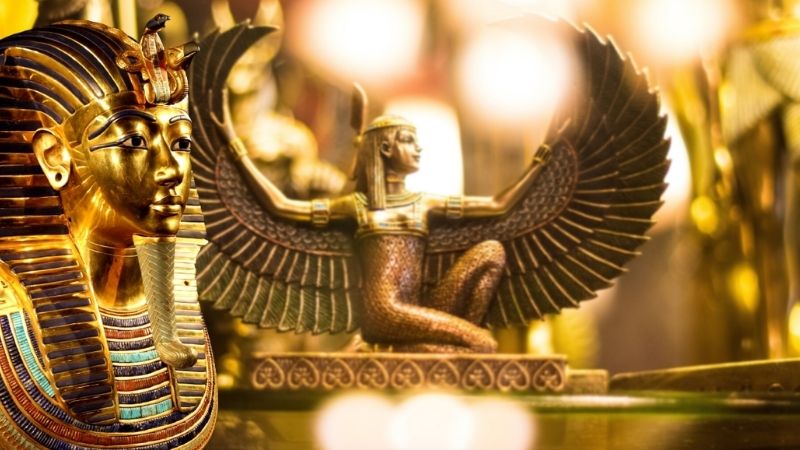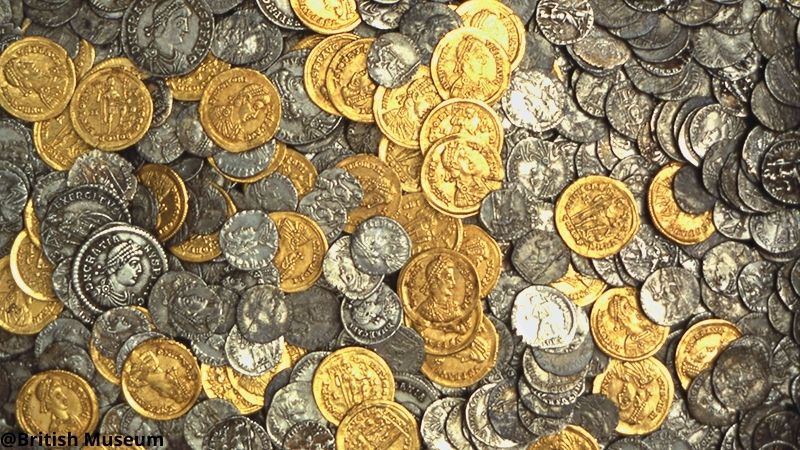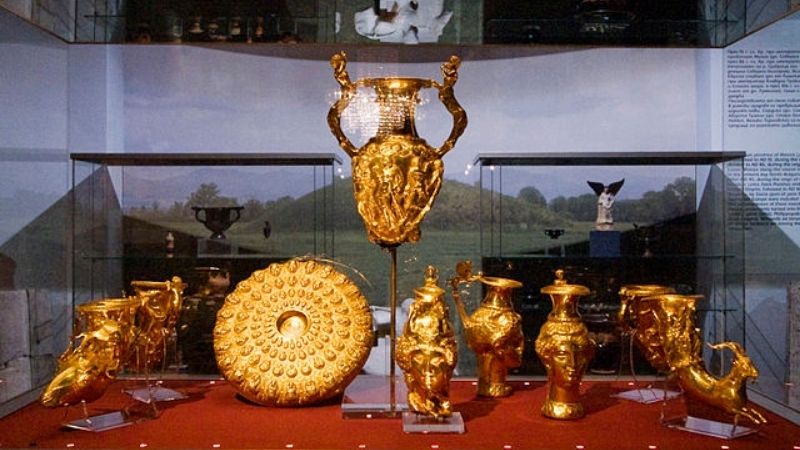Check out 5 most captivating gold finds in history
Time of publication - 2022.05.12
Gold finds that you might have seen in treasure hunt movies actually do appear in real-life scenarios.
In fact, there is a chance that astonishing hidden treasures still remain undiscovered.
Gold is a precious metal that people trusted for thousands of years until this day. Being the most universal currency, people can rely on it everywhere they go. Even in countries like North Korea. Therefore treasure gold locations can be quite unconventional.
In this blog post, we review five of the most impressive gold finds that you might have not heard about.
"The Ship of Gold" finds
SS Central America was a ship that sunk with an unimaginable amount of gold. This accident commanded hundreds of lost lives to the sea and vanished roughly 30 000 pounds (13 000 kg) to the depths of the sea.
Estimates suggest that at the time the ship carried gold with a value equivalent to $765,000,000.00, considering the inflation. In the meanwhile, the value of the ship was only $4,070,000.00 in today's money. This means that the treasure is almost 200 times more valuable than the ship itself!
In 1988 remotely operated vehicles recovered significant amounts of gold and artefacts. At that time the recovered gold bar that weighs 80 lb (36 kg) was sold for $8,000,000.00. The total value of the gold recovered was roughly $100-$50 million. They successfully discovered newly struck 1857-s Double Eagles, as well as finding gold coins of $20 denomination, ingots and other items.
King Tut’s Tomb gold finds
Gold is a significant part of ancient Egyptian mysteries. Artisans made many items made of gold: amulets, masks, vessels and ornamental weapons to put on display for glamorous charms. Egyptians believed that gold embodies the flesh of the god Ra which is synonymous with a mountain of gold.
King Tutankhamun is a major character in Egyptian lore. Being a young Pharoah he took the throne when he was just nine years old. His reign was followed by a sudden death that occurred just a decade later at the age of 19.
In 1922 archaeologist Howard Carter discovered King Tut’s tomb. The treasure was so stunning that some people refer to it as the “house of gold”. The tomb contained many ancient artefacts and some contained gold, especially King’s sarcophagus.
Inside the coffin laid King Tut’s mummified remains with a golden death mask that represented the king’s likeness. The 22-pound mask is 1.8 feet tall and contains 321.5 oz. gold (~145.8 kg). The value of the metal content alone exceeds the sum of $600,000.00. On the other hand, the contextual value of such legendary items is priceless.
Other gold found in the tomb included statues, jewellery, decorations, sandals and even solid gold toe caps!
The Hoxne Hoard gold find
In 1992 metal detectorist Eric Lawes discovered something that would later become one of the best representations of the roman empire. The hoard contained 14,865 Roman gold, silver, and bronze coins, as well as 200 pieces of silver tableware and gold jewellery. Estimates suggest the pieces of the treasure date back all the way to the fourth and fifth centuries.
The objects are now on permanent display at the British Museum in London. The visitors have the opportunity to check out the authentic heritage left behind by the roman empire. The Treasure Valuation Committee valued the hoard at £1,750,000.00 in 1993 (approximately £3.64 million in 2020). But does it mean that if you find this treasure you are eligible to keep it?
The story of to whom belongs the treasure was newsworthy back in 1993. During this year a coroner’s inquest was held which declared that Hoxne Hoard was a treasure trove. According to British law, this means that it was buried earlier in order to be recovered later.
Under British law, the buried treasure belongs to whoever buried it. If no one claims it then it becomes the property of the crown. However, it doesn’t mean that Eric Lawes was not rewarded. Treasure Trove Reviewing Committee valued the hoard at £1,750,000.00 million (which is about £4,400,00.00 million in today's value).
The Titanic gold find
The infamous event that we probably all heard of included gold treasures as well. The RMS Titanic set sail from Southampton, England to New York City on April 10th, 1912. Many high-class citizens boarded the ship also bringing some amounts of gold with them. The Titanic sank five days into the voyage, becoming one of the deadliest commercial marine catastrophes in history.
Millions of dollars worth of antiquities, many belonging to rich passengers, were lost at sea. Paintings, novels, and even luxury automobiles were among the items on display. Over the years expeditors made many efforts to bring back the artefacts. They managed to recover a variety of gold jewellery, brooches, pocket watches and other personal accessories.
Besides numerous belongings containing gold and pure gold bullion, there were personal items with sentimental value. These artefacts and the stories behind them provide a glimpse into the rich history that is behind the RMS titanic.
In 1994 divers discovered a travel bag containing a gold locket belonging to passenger Virginia Clark. She boarded the Titanic with her husband, Walter, with whom she was on a honeymoon. The pair was returning to America on the Titanic to celebrate the birthday of their two-year-old son, but only Virginia survived the sinking.
The Panagyurishte Treasure gold find
The Panagyurishte treasure is by far the largest gold finds in the world which was unearthed by accident. The Deykov brothers discovered this treasure in 1949 during clay digging near the town of Panagyurishte in Bulgaria.
This find totalled 6.1 kg of gold. The treasure contains nine vessels made of pure gold that depict the hints of ancient Thracian myths. Three of the jugs feature the heads of goddesses Hera, Aphrodite and Athene. On the rhytons, there are numerous legendary scenes that depict Greek heroes such as Dionysus, Apollo, and Artemis.
Estimates suggest that the treasure dates back to the 3rd-4th centuries BC. Some theories imply that the artefacts were utilized during royal ceremonies for a Thracian king. This gold find is one of the best-preserved artefacts of Thracian culture, which is now displayed at various museums globally.
Conclusion
So far, the hidden treasures reveal that gold has been one of the most reliable currencies throughout history. As a matter of fact, people still consider gold a great investment opportunity in modern times.
After centuries and even millennia, the buried gold preserved its original state as it was on the day that it was buried. In the long run, this currency remains sustainable as it doesn’t tarnish. This means that savings in gold are irreplaceable at any point in time.
By investing in gold you secure your savings for any scenario. While alternative currencies devalue your savings with time. We heard stories of how our clients chose to save up their wealth in banknotes. And then almost lose it all to inflation. That is because, unlike gold, such currency is replaceable and easily produced.
Are you interested in turning your savings into more reliable currency? Let Florinus help you to make the best purchase suited for your budget with a free consultation!
Sign up for the Florinus newsletter and be the first to learn about inventory additions, exclusive promotions, special offers and much more!
Subscribe to the newsletter





